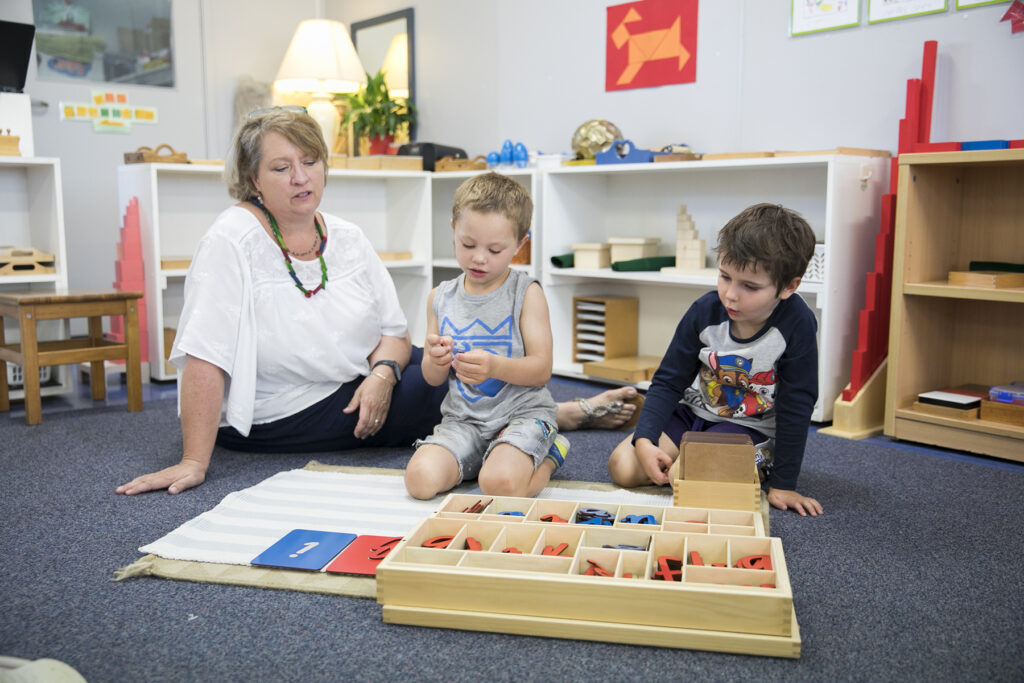The right materials will call to your child
Parents often ask if using the Montessori Method at home requires the purchase of many expensive materials. First, keep in mind that a few, carefully selected materials are far better than oodles of inappropriate ones. Additionally, a crowded, cluttered environment can be off-putting, even stressful, to the child. While the materials should be many things, such as beautiful, educational, and above all, enticing to children, they needn’t actually cost a lot of dough.
“The environment must be rich in motives which lend interest to activity and invite the child to conduct his own experiences.” – Maria Montessori
True Montessori materials come in three main categories: sensorial, practical life, and academic.
Children learn through their senses
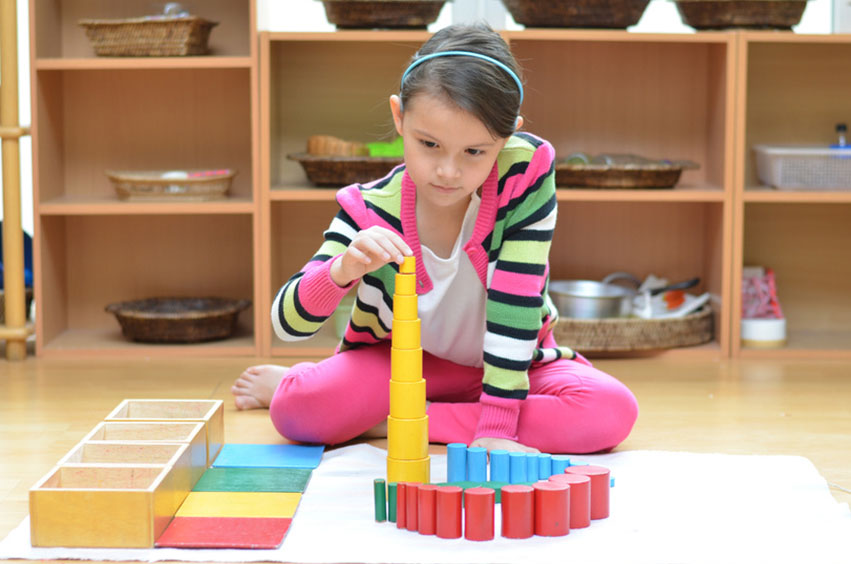
Sensorial Materials
As the name indicates, sensorial materials are designed to help children learn through their senses. Study after study (going all the way back to Aristotle, yes, really!) have shown that sensory learning is the very foundation of early brain development. Starting from birth, children need an abundance of sensory information to build the neurological connections that are essential to human intelligence.
Our aim in education in general is two-fold, biological and social. From the biological side we wish to help the natural development of the individual, from the social standpoint it is our aim to prepare the individual for the environment[.…] The education of the senses is most important from both these points of view. The development of the senses indeed precedes that of superior intellectual activity and the child between three and seven years is in the period of formation.
We can, then, help the development of the senses while they are in this period. We may graduate and adapt the stimuli just as, for example, it is necessary to help the formation of language before it shall be completely developed.
— Maria Montessori
Montessori’s sensorial materials provide active, hands-on experience for the senses
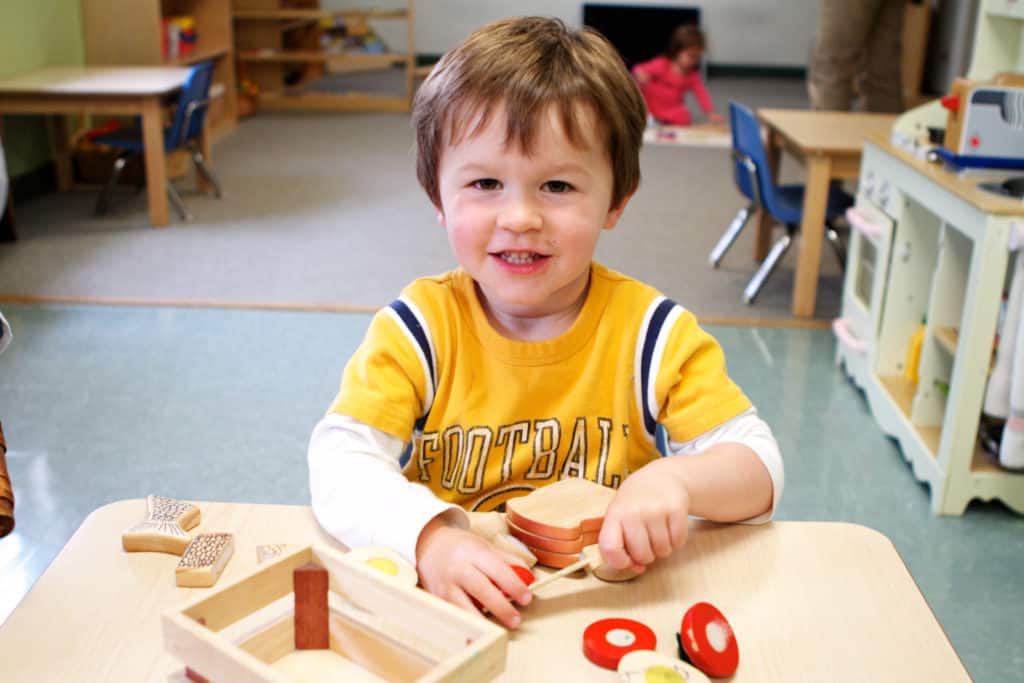
Montessori’s sensorial materials provide active, hands-on experience for the senses. In Montessori classrooms, these materials include things like the classic Pink Tower, ten solid wood cubes which vary in size to teach a visual and tactile understanding of dimension. Or beautiful brass or chrome bells, mounted on wooden bases and painted to correspond with the piano keyboard. These help develop the child’s auditory perception of varying tones. Such materials can be very expensive because they’re designed to withstand continual use by many children, and for the long-term. It is possible to provide sensory-stimulating materials without paying for professional grade. There are many websites, such as Monthome.com, or Montessori by Hand which provide instructions for making your own sensorial materials or purchasing them inexpensively. However, bear in mind that it is still important to use beautiful and natural materials to evoke the child’s sense of respect and carefulness in his or her environment.
Practical life materials are real, everyday tools
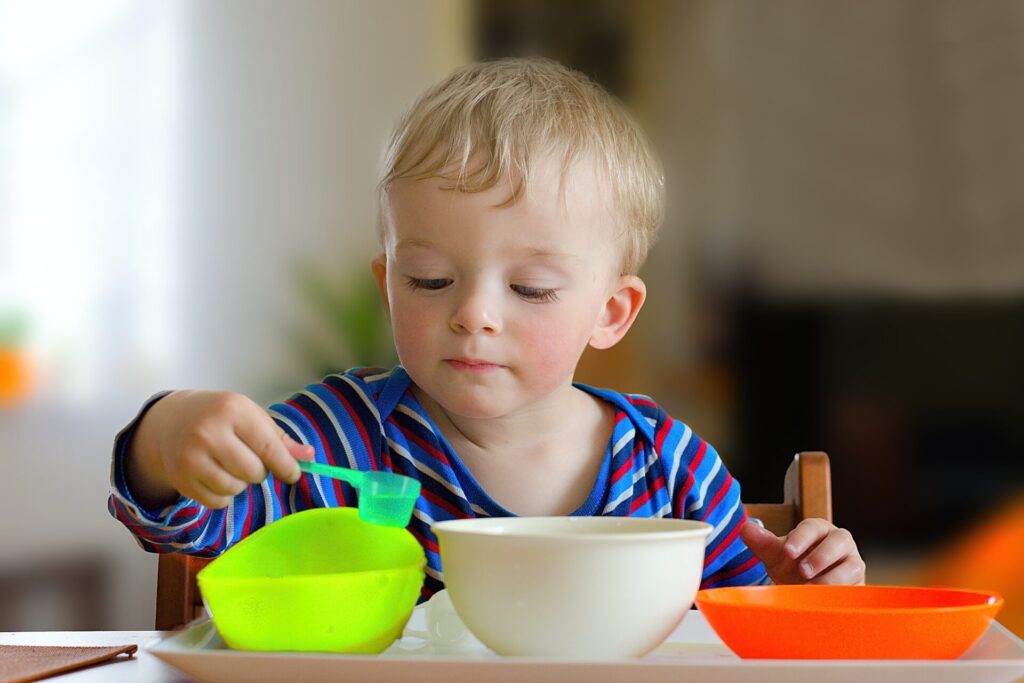
Practical Life Materials
Practical life materials are real, everyday tools, often scaled down for little hands and statures. They teach real-life skills such as sweeping, pouring, washing dishes, setting a table, or dressing. Children will instinctively imitate the everyday activities they see around them. Through practical life lessons, children develop small and large motor skills, balance, hand-eye coordination, problem solving, independence, confidence, and more. Happily, it is not necessary to spend a ton of money on practical life materials at home. Instead, take the time to show children, slowly and step-by-step, how to master the activities already going on in your home or community. Resist the urge to do things for them and do more with them. Then let them ‘have a go’ on their own. It may be necessary to provide some child size tools but you still needn’t spend a ton of cash. For more tips on practical life lessons, click here.
Everything must be presented and everything must be connected with life; but this does not mean that the actions which children have learned to perform and to integrate with their practical lives should be expressed or directed by us in every detail. This integration of his actions is one of the highest efforts that a child can make. – Maria Montessori
Classic Montessori materials for language development include sand paper letters, phonics cards, and movable alphabets
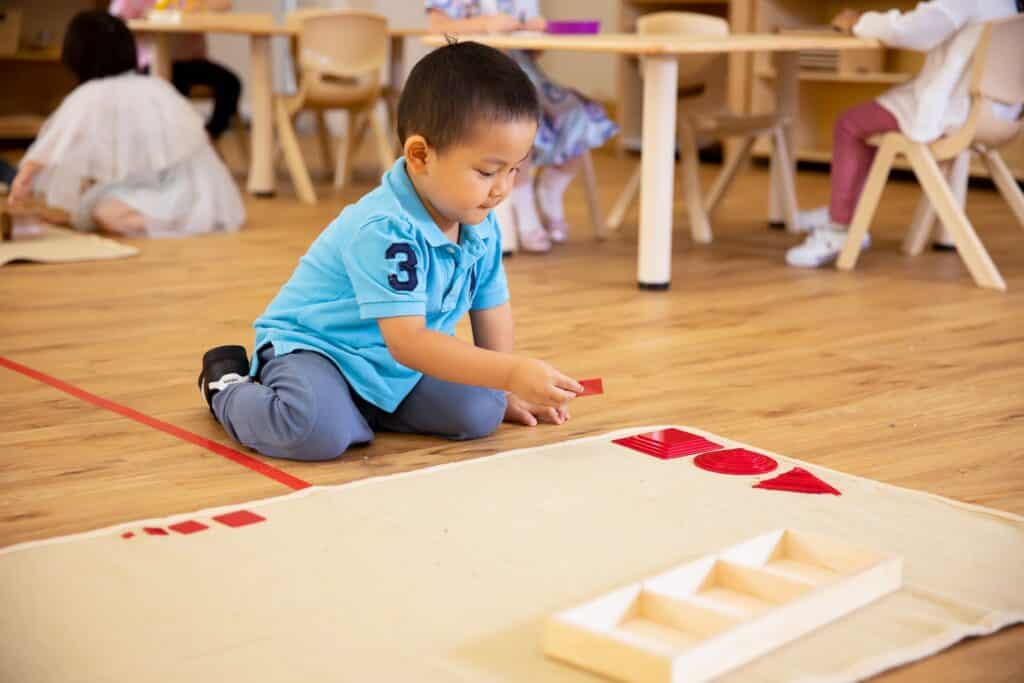
Academic Materials
Both practical life and sensorial activities help build the neurological infrastructure necessary for learning language, math, science, and more. The area of language development starts with early mastery of the spoken word and moves on to the learning the sound and shape of letters and broadening vocabulary. These skills open the door to reading, writing, and grammar skills. Classic Montessori materials for language development include sand paper letters, phonics cards, and movable alphabets. If you’d like to learn more about how you can teach your child to read at home, click here.
The Montessori Method also uses hands-on materials to teach math and science. Through materials such as the classic golden beads, number rods, and spindle boxes, children learn the basics of mathematical and scientific concepts. These concepts, in turn, prepare the child for more advanced lessons.
1. The principal quality of my material is to attract the attention of the child and to provoke a permanent reaction within the child.
2. of my material is that it is systematic. All the objects are connected in a series and together form a material of development.
3. of my material is that it contains, what I call, the control of error. As the child uses the material, the material shows the child his mistakes and, in this free path the child can correct these errors. his also liberates him from unfavorable and discouraging criticism of others and develops in him the sense of criticism.
— The California Lectures of Maria Montessori

